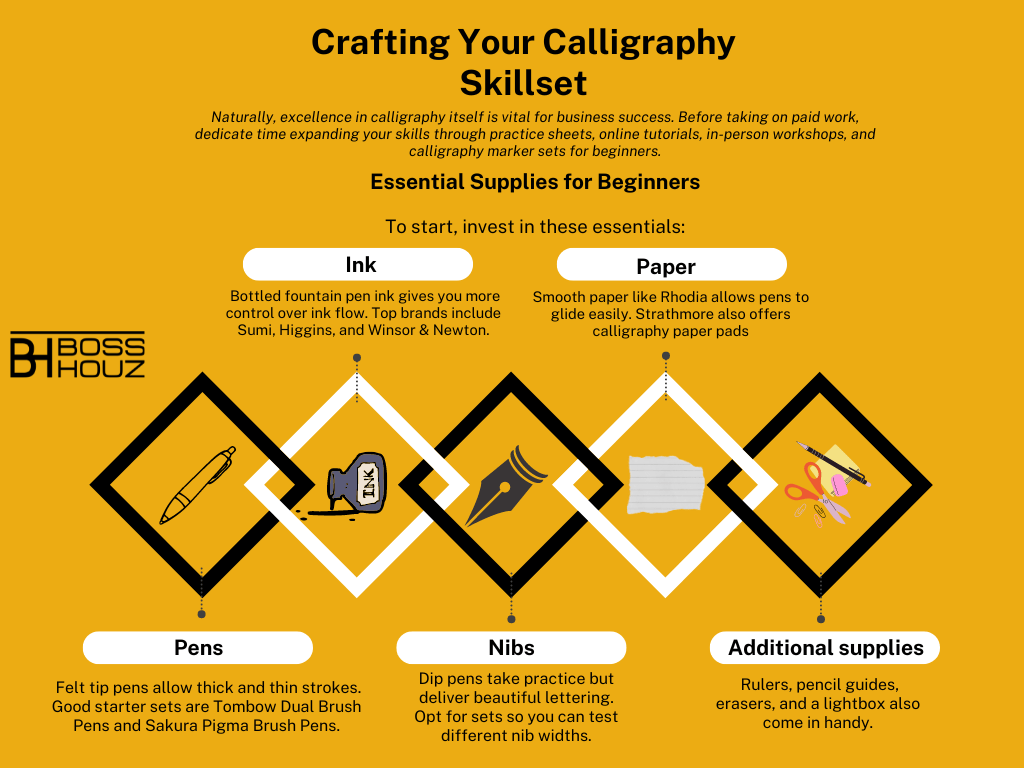Calligraphy, the art of beautiful handwriting, has experienced a major renaissance in recent years. What was once seen as an obscure hobby has transformed into a popular creative outlet and potential business opportunity. As interest in custom stationery, invitations, and hand-lettered goods continues to rise, aspiring calligraphers now have a chance to turn their artistic talent into a thriving business.
Whether you want to escape the 9-5 grind or see your passion projects turn a profit, starting a calligraphy business allows you to make money doing what you love. However, more than just mastering beautiful scripts is required. By blending creativity with an entrepreneurial drive, your homemade lettering could become a flourishing brand.
This guide covers everything you need to launch a successful calligraphy business from scratch.
Table of Contents
Understanding the Booming Calligraphy Market


The calligraphy market is experiencing rapid growth, fueled by demand for custom stationery, hand-lettered wedding invitations, chalkboard art, and home décor. In fact, the global calligraphy market size is projected to grow by $1.06 billion between 2022-2026, according to industry analysis from Technavio.
Key factors driving market expansion include:
- Wedding industry growth: More couples are seeking personalized invitations featuring calligraphy for weddings and other events.
- Home décor trends: Calligraphy prints, signs, and wall art are popular additions to home and office spaces.
- Social media influence: Platforms like Instagram showcase calligraphers’ work, inspiring others to learn.
- Small business marketing: Cafes, boutiques, and other small businesses use hand-lettered chalkboards and signs in branding.
Within the broader market, key segments to target include:
- Weddings: $72 billion wedding industry with high demand for customized calligraphy stationery.
- Home décor: Seeking calligraphy prints, chalkboard art, and signs for home spaces.
- Gifts: Interest in unique, handmade gifts with a customized, personal touch.
When identifying your niche, analyze competitors, gaps in your local market, and your own style strengths. By focusing your offerings around specific, high-demand services, you set yourself apart while meeting customer needs.
Crafting Your Calligraphy Skillset


Naturally, excellence in calligraphy itself is vital for business success. Before taking on paid work, dedicate time expanding your skills through practice sheets, online tutorials, in-person workshops, and calligraphy marker sets for beginners.
Essential Supplies for Beginners
To start, invest in these essentials:
Pens: Felt tip pens allow thick and thin strokes. Good starter sets are Tombow Dual Brush Pens and Sakura Pigma Brush Pens.
Ink: Bottled fountain pen ink gives you more control over ink flow. Top brands include Sumi, Higgins, and Winsor & Newton.
Nibs: Dip pens take practice but deliver beautiful lettering. Opt for sets so you can test different nib widths.
Paper: Smooth paper like Rhodia allows pens to glide easily. Strathmore also offers calligraphy paper pads.
Additional supplies: Rulers, pencil guides, erasers, and a lightbox also come in handy.
Developing Your Style
Getting comfortable with traditional calligraphy scripts like Copperplate and Italic is key. Once you’ve established a foundation, start developing your own modern spin. Experiment with factors like:
- Ink colors: Mixing shades and saturations.
- Creative embellishments: Incorporating scrollwork, borders, or botanical elements.
- Letter widths: Mixing thick and thin strokes.
- Word art: Playing with the positioning and spacing of letters.
Finding your niche style takes practice but is key for standing out. Analyze competitors and gaps in your local market. By developing a unique aesthetic, you effectively differentiate yourself.
Crafting Your Business Plan
Before diving headfirst into business ownership, dedicate time to planning for long term success. Key steps include:
Choosing a Business Structure
Will you operate as a sole proprietorship, partnership, LLC, or corporation? Consider liability protection, regulations, taxes, and ease of setup. For most calligraphy businesses, a simple LLC provides sufficient protection without lots of red tape.
Creating a Business Plan
Every successful business needs a roadmap. Outline core details like:
Executive summary: Overview of key points.
Company description: Mission, values, and unique aspects.
Services: Specific offerings, ideal clientele and how you’ll reach them.
Market analysis: Research on competitors and target consumers.
Operations: Studio space, equipment, software, etc.
Marketing strategy: Branding, advertising, and partnerships.
Financial projections: Startup costs, pricing, and predicted revenue.
Revisiting your business plan annually keeps you on track as your business grows.
Handling Legal and Financial Considerations
Don’t overlook key legal and financial steps when establishing your calligraphy studio:
- Register your business: Follow the rules for your state or municipality, which often means registering your LLC.
- Get business insurance: General liability insurance protects you in case clients claim property damage or injury. Professional liability insurance offers protection against claims that your services were subpar.
- Set up accounting: Using accounting software helps track income, expenses, profit margins, and taxes. QuickBooks is a top choice.
- Open a business bank account: Keep your personal and business finances separate. Explore business checking account options to find one with suitable fees and features.
- Understand taxes: Stay compliant on federal, state, and local business taxes by educating yourself or working with an accountant. Sales tax rules vary based on location and products sold4.
Building an Online Presence
In 2024, establishing a strong online presence is non-negotiable—especially for creatives selling specialized offerings like calligraphy.
An amateur social media account with scattered posts won’t cut it. Strategically promoting your business across platforms drives sales and establishes credibility.
Top objectives include:
- Launching a professional website
- Curating an engaging Instagram feed
- Cultivating organic reach through SEO
- Experimenting with paid ads
Let’s explore how to get this right.
Creating an Enticing Online Portfolio


Your portfolio showcases work to potential clients, so make it shine. High-quality photography is essential for conveying detail on invitations, signs, and prints.
Tips for photographing work:
- Use a clean, simple backdrop. Black or white works well.
- Ensure consistent lighting. Natural light near a window generally works best.
- Take photos from multiple angles. Detail shots, angled views, and straight head-on images each serve different purposes.
- Edit for brightness, clarity, and color accuracy. Subtle edits go a long way.
- Organize work into cohesive collections like “Wedding Suite,” “Chalkboard Signs,” or “Watercolor Prints” for easy browsing.
With dazzling images, intriguing captions, and strategic organization, your portfolio grabs attention while allowing work to speak for itself.
Choosing the Best Online Platform
Should you sell through Etsy, your own online store, Instagram, or a combination? Consider factors like:
Etsy
- Established marketplace with built-in customer base
- Handmade and vintage focus aligns well with calligraphy
- Optional pattern by Etsy feature helps drive traffic
- Significant fees per sale (Listing fee + 5-6% of order value)
Personal website
- Full creative control over brand experience
- Ability to customize offerings explained in detail
- Monthly overhead for site hosting, maintenance, marketing
- Need to drive your own traffic without marketplace advantage
- Highly visual platform ideal for calligraphy
- Showcases portfolio to large audience
- Can link to online store in bio
- Primarily a discovery platform, not built for transactions
Many calligraphers find success selling through Etsy while also running a portfolio website and Instagram. Etsy provides built-in traffic while a personalized domain builds credibility.
No need to limit yourself to just one platform!
SEO Strategies for Better Visibility
Driving organic traffic from search engines like Google allows you to attract ideal customers without spending big on ads.
Calligraphy SEO tactics:
- Research target keywords around services offered and optimize pages for each. For weddings, target words like “custom wedding invitations calligraphy.”
- Update page titles and meta descriptions for every page.
- Create blog content around trending calligraphy topics to attract search traffic.
- Get listed on Google My Business and niche calligraphy directories.
- Guest post on other calligraphy sites to build backlinks.
- Engage followers on Instagram and Etsy by responding to all comments and questions.
By publishing targeted, high-value content across platforms, your site visibility improves over time.
Marketing Your Calligraphy Brand
Beyond an exceptional online presence, creative marketing and partnerships expand your reach.
Crafting Brand Assets
Consistent, professional branding makes a lasting impression. Essential assets include:
Logo: A memorable logo appears across your website, packaging, social media, and any external communication.
Color palette: Use cohesive colors in your logo, website, products, and social media imagery.
Brand guide: Outline details like typography, logo usage, voice, and aesthetics in one place to maintain consistency as you scale.
Business cards: Print professional cards to hand out at events, meetings, craft fairs, and open houses.
Packaging: Branded packaging like sticker seals, wrapping paper, and thank you cards reinforce brand recognition with each order.
With branding locked down, focus next on spreading the word.
Marketing Channels to Prioritize
A multifaceted approach across channels ensures you reach clients however they prefer to engage.
Word of mouth: Satisfied client referrals are hugely valuable. Deliver exceptional service and product quality.
Partnerships: Partner with stationery shops, event spaces, florists, and wedding planners. Offer cross-promotions or discounted packages to tap into shared audiences.
Craft fairs and open houses: Local events let you share portfolio samples face-to-face. Collect email signups to stay connected with interested attendees.
Social media and email: Share your latest work, client testimonials, and behind-the-scenes glimpses into your process to nurture an audience that recognizes your brand. Offer exclusive discounts or early access to fans.
SEO and content: Publish blog posts on trending calligraphy topics to organically attract those searching related keywords. Answer common client questions to establish expertise.
Paid ads: Test cost-effective channels like Instagram and Google Ads with small daily budgets, optimizing efforts based on ROI. Reinvest a percentage of revenue into growing awareness.
Track metrics across efforts to determine optimal allocation of your marketing budget. Through data-backed testing and refinement, your most effective positioning emerges.
Pricing Your Work Profitably
Undercharging devalues your skill and risks burning yourself out creatively. Research industry rates in your area to set competitive pricing as a newer calligrapher. Price based on complexity, time invested, and the client’s budget.
Consider covering:
Labor: Hourly rate reflecting your expertise.
Supplies: Paper, ink, envelopes, and packaging.
Studio overhead: Space costs, software subscriptions, website fees, etc.
Business expenses: Accounting fees, advertising, branding assets.
Profit margin: Typically 100-200% markup from production costs.
For example, if supplies and labor on a wedding invitation suite total $150, charge $300-450.
If concerned about limiting clients with higher pricing, offer tiered packages:
- Startup package: Digital-only designs without expensive paper upgrades.
- Essentials package: Affordable base option meeting needs.
- Premium package: High-end offering with luxury paper, embellishments, etc.
Accept custom orders for clients wanting fully personalized work outside set packages. Offer hourly consultations to refine vision and provide exact quotes based on their budget and requests.
As your expertise grows, increase rates incrementally over time.
Expanding Your Product Line
Beyond traditional calligraphy services, creative productization allows you to serve more customers while tapping into new profit centers.
Diversifying into Related Offerings
Offer workshops teaching modern calligraphy styles to groups or private parties looking to pick up a new hobby. Sell beginner brush pen sets as add-ons.
For corporate clients, provide hand-drawn logos, menu lettering, or signage alongside custom chalkboard art.
Partner with a local stationary store to sell wholesale greeting cards featuring your designs. Take product photos on consignment to decorate their retail space.
At seasonal craft fairs, offer a mix of prints, ornaments, T-shirts, mugs, and gift sets along with your core calligraphy services.
The more avenues you create for customers to support your art, the more ways you profit from your passion.
Incorporating Digital Products
Digital products require upfront effort to create but sell infinitely with little added work per purchase. Consider offering:
- Downloadable social media templates: Custom Instagram story templates, Facebook banners, and YouTube thumbnail designs to help other entrepreneurs level up their brand’s social presence.
- Calligraphy fonts or brush packs: Convert your hand-drawn lettering into digital, installable fonts or Procreate brushes customers can use for their own projects.
- Online courses: Teach your calligraphy process through self-paced video lessons, technique tutorials, and practice sheet downloads. Craft engaging course marketing pages and sales funnels to attract enrollments.
With the right technology stack, you can create compelling digital products while serving more customers. Explore platforms like Gumroad, Teachable, and Etsy to get started.
Delivering 5-Star Customer Experiences
Turning one-time clients into vocal brand advocates starts with exceptional customer service at every touchpoint.
Communicating Effectively
Set clear expectations upfront by outlining your creative process, typical timeline, and policies around revisions.
During consultations, guide clients through options while listening closely to understand their vision and budget. Manage requests gracefully by presenting creative solutions to fit needs without overpromising.
Provide timely progress updates and request any critical feedback early once initial drafts are complete. Offer reasonable revisions in your contracts, then stick to what’s agreed upon.
Ensuring Quality and Care
Carefully wrap final products, enclose a handwritten thank you note, and ship orders promptly. Follow up post-delivery to address any concerns and request an online review.
When fulfilling larger orders, implement organized systems to maintain accuracy. Double check recipient addresses and order details to prevent errors.
By infusing thoughtfulness while meeting deadlines, your business earns referrals from delighted clients.
Growing Your Calligraphy Brand
Over time, streamline operations so your business can scale. Assessing when to outsource tasks prevents you taking on too much.
Optimizing Workflows
Refine your client onboarding process for smoother lead generation. Create intake forms, project checklists, and proposals to systemize sales.
Batch basic tasks on designated days for efficiency. Set aside weekdays for client work and dedicate weekends to photographing new portfolio pieces, editing blog posts, or restocking inventory.
Tools like Trello, Asana, and Dubsado help manage milestones across multiple projects while keeping you on track.
Knowing When to Outsource
Consider hiring a virtual assistant to handle administrative tasks like scheduling consultations or processing orders. This lightens your load so you can focus on billable client work.
Outsource to contractors as needed for web design, bookkeeping, social media, or packing merchandise. Carefully vet specialists able to accurately represent your brand.
When order volumes spike, partner with co-packagers able to assist producing high-quality products at scale. Slowly build up your own team to take over core operations as revenue allows.
The key is recognizing your strengths and when to call in reinforcements. There’s no need to run yourself ragged trying to balance every business task alone in the name of savings. Know what to delegate so you stay centered on your zone of genius—creating gorgeous lettering for appreciative customers.
Final Thoughts on Turning Calligraphy into a Career
Starting a profitable calligraphy business centers on four key pillars: artistic talent, an entrepreneurial spirit, business fundamentals, and effective marketing.
By taking the time to thoughtfully establish your capabilities on each front, your studio builds a foundation set up for longevity. Remain agile to trends and client feedback, while staying grounded in the core of your offering—beautiful, custom lettering transformed into cherished gifts and décor.
The world of business ownership certainly involves no shortage of logistics. But by leading with creativity rather than paperwork, you craft a career fueled by passion.
Now that you know the steps for launching your own artful venture, how will you leverage your talents? What mark will your hand-drawn letters leave on the world?
The opportunity awaits. Be bold, trust the process, and pave the path by design, not default. Your dreams demand action. Why not start today?








